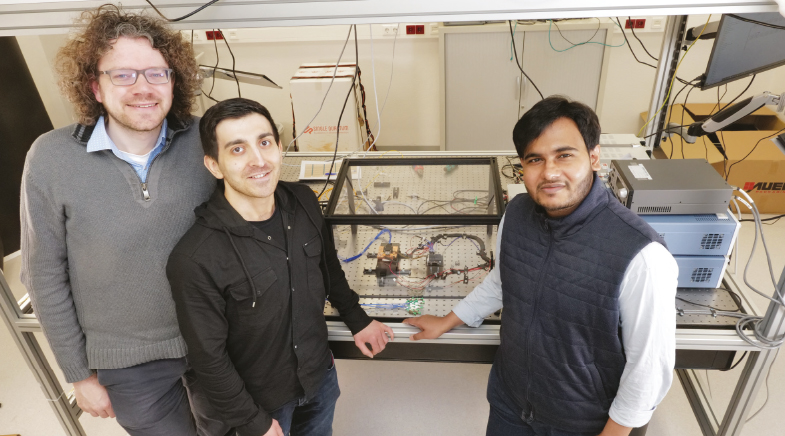Stemming the rot
-
- from Shaastra :: vol 03 issue 03 :: Apr 2024

Why America's economic orientation may be inefficient.
It is axiomatic that a sound education system is essential for any nation. The argument for investing in education is as follows: highly educated people are more productive and innovative, and thus accelerate growth and create opportunities for everyone. The educated also generate higher tax revenues, directly as high-earning individuals and broadly by creating employment and improving economic efficiency. The returns on investment (RoI) in a good education system are high, but they manifest themselves only over the long term.
An axiomatic corollary is that an education system must have a strong STEM (Science, Technology, Engineering, Mathematics) focus. STEM delivers the big breakthroughs in blue-sky science and technological innovation, in creating efficient infrastructure and in data-driven disciplines such as socio-economic analysis.
Every advanced nation, from the democratic to the authoritarian, irrespective of its economic orientation, has bought into this argument: you cannot develop or maintain competitiveness without a strong STEM base.
Sociology Professor John D. Skrentny isn't questioning the axiom or its corollaries. However, in this incisive analysis of STEM education in the world's most technologically advanced country (the U.S.), he points out a paradox. Logically, industry and employment opportunities should be geared towards deploying STEM students in ways that maximise their utility to help generate the high RoI that justifies STEM investments. But this does not, in fact, occur.
The author contends that America's economic orientation is inefficient because STEM graduates don't end up working in STEM fields. He claims that over 70% opt out of STEM work and argues that a large share of the investment in STEM education is wasted.
Skrentny actually takes the argument supporting heavy investment in STEM further by stressing the urgency of developing solutions to crises such as climate change and pandemics. Only STEM can combat the next pandemic or pull the planet back from the brink of global warming.

CLOSED DOORS
He also dwells on diversity. STEM education everywhere has gender biases. Access to STEM is also skewed against the economically disadvantaged. Ensuring women and economically disadvantaged minorities get opportunities to study and work in STEM would help them achieve higher income levels. Also, he writes, STEM-focused organisations remain undiversified and don't treat women or minorities with sensitivity, prompting them to exit STEM roles.
Skrentny points out a paradox that indicates the mismatch between the broad goals of creating a STEM base and utilising that base optimally. Even as most American STEM graduates avoid work in STEM, U.S. institutions bemoan the inability to find skilled people to fill STEM-specific roles — so much so that U.S. visa policy encourages immigrants or long-term residents with STEM qualifications to meet the gap.
One issue is compensation. In an efficient market, STEM compensation should be high enough to attract job aspirants, and to retain trained people. But this is not the case. A lawyer, a manager or an investor tends to earn more than somebody in a pure STEM role, even in organisations with a STEM focus. Hence, STEM graduates look for such roles, often by going to business or law schools.
High payouts in the IT industry, he writes, are anecdotal and obscure the fact that, even there, managers are better paid than software engineers. Moreover, "burn and churn" management practices often lead to a lack of job security in STEM. The worker gap is, therefore, a self-inflicted wound due to a distorted compensation structure.
Obviously, the Indian experience is different. But the resonances are strong. Indians with STEM skills have benefited by filling U.S. visa quotas. But they also look more often for MBAs instead of PhDs in their fields.
Biases are another issue: only 16.6% of Indian scientists are women, the worst gender ratio across 37 Asian countries, according to UNESCO. Scheduled Castes and Scheduled Tribes also have low representation in STEM-focused industries (and elsewhere).
There's plenty of food for thought in this well-researched book with its counter-intuitive presentation of data and arguments. It is important for the future of humanity to not only create a strong foundation for STEM education but also encourage STEM graduates to stay wedded to their disciplines. Employers and policy-makers need to find ways to address this "leakage".
Devangshu Datta is a consulting editor and columnist with a focus on STEM and finance.
Have a
story idea?
Tell us.
Do you have a recent research paper or an idea for a science/technology-themed article that you'd like to tell us about?
GET IN TOUCH














